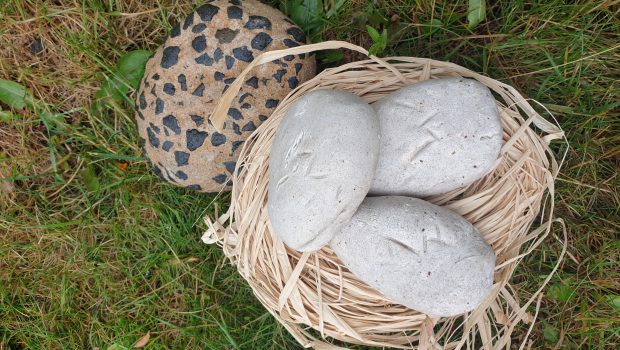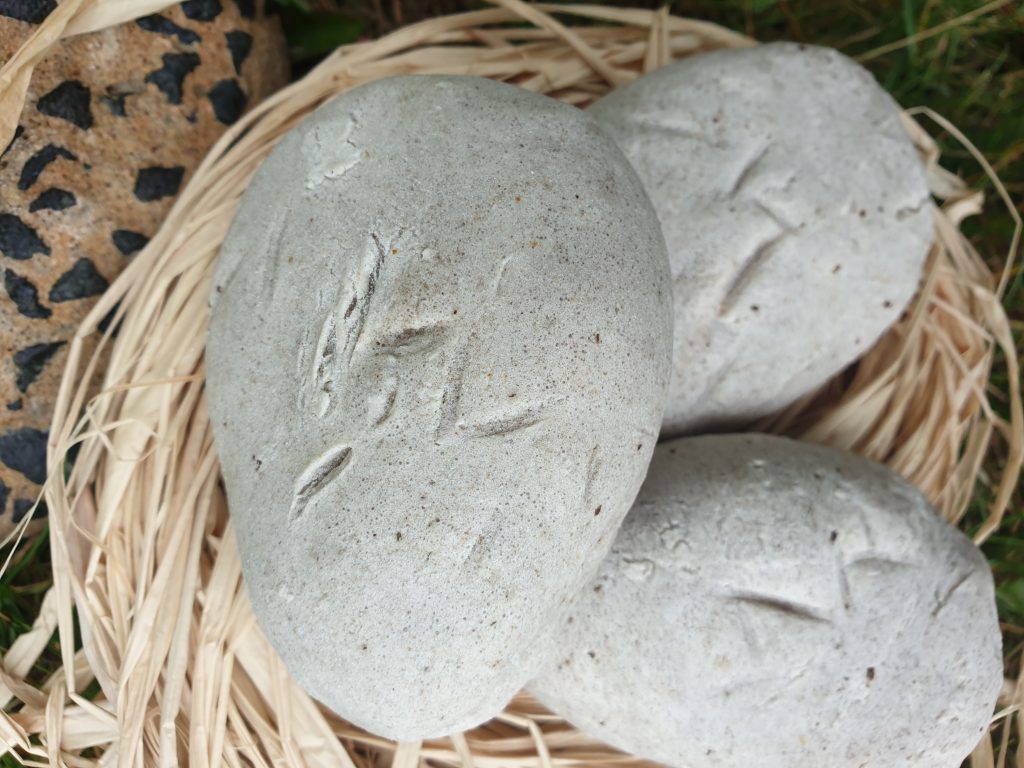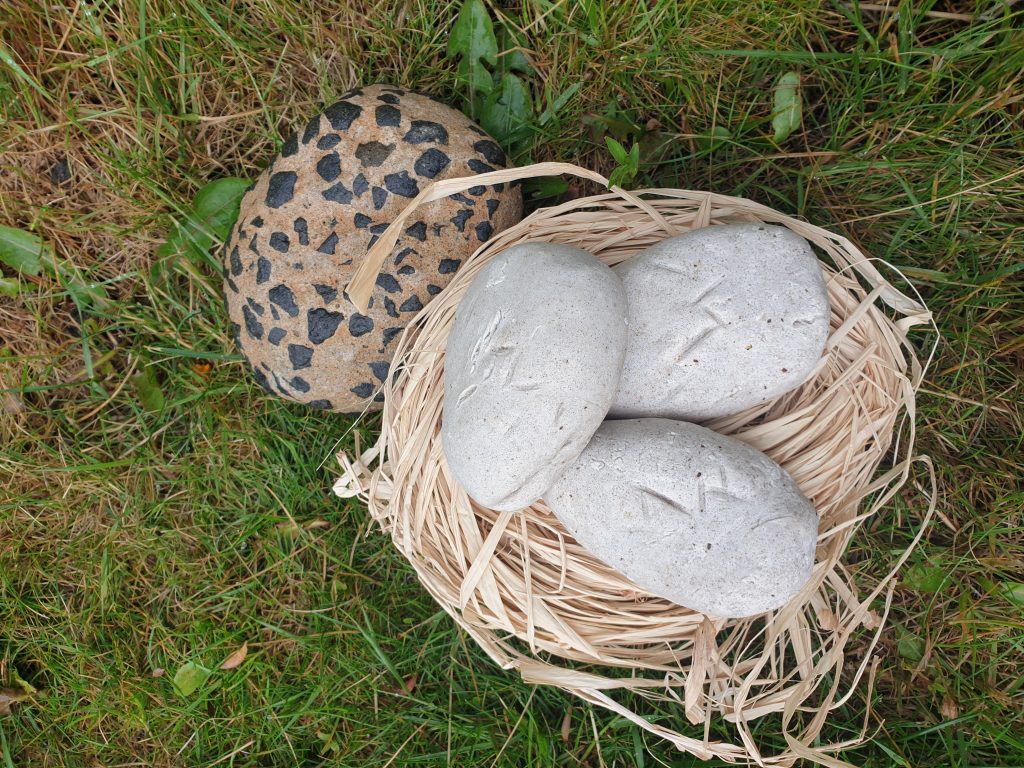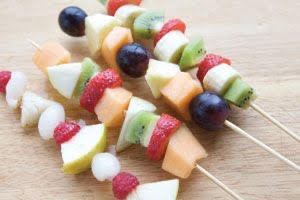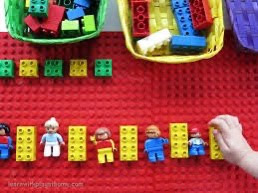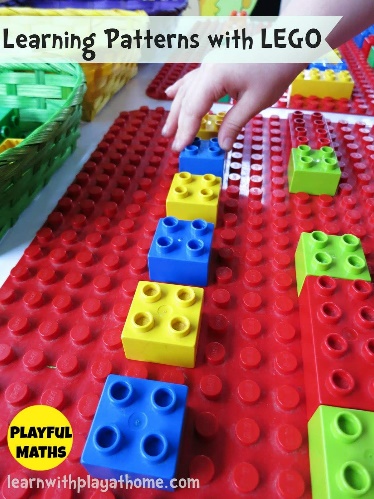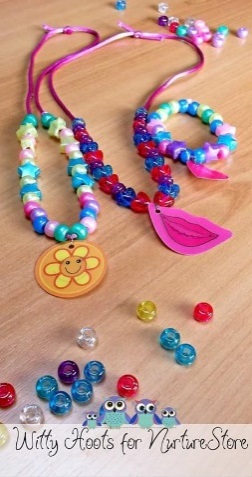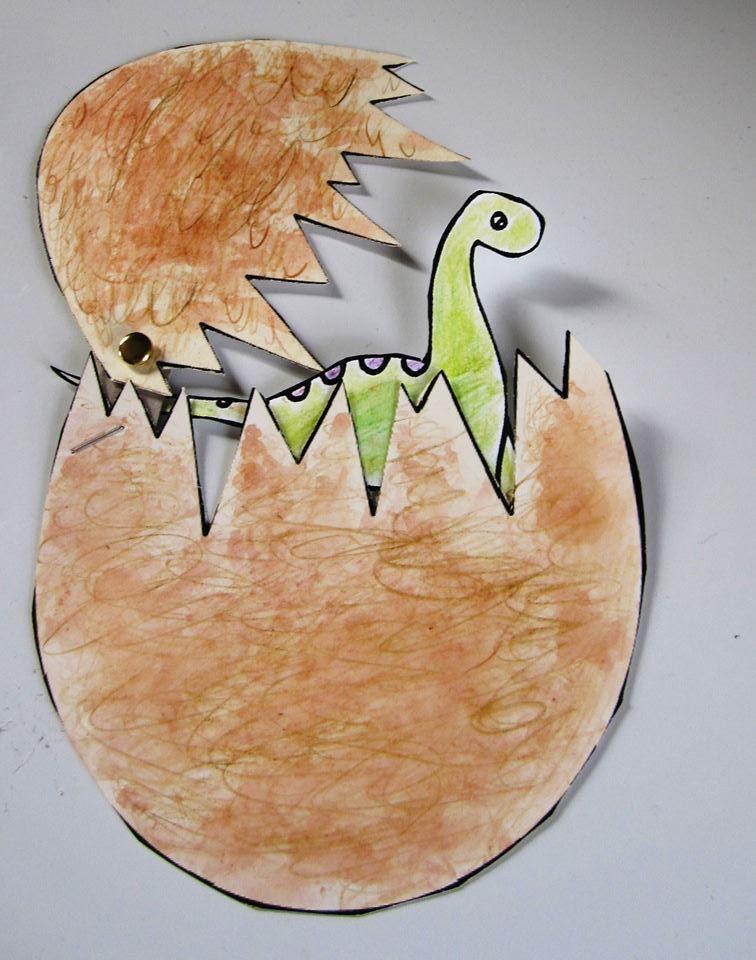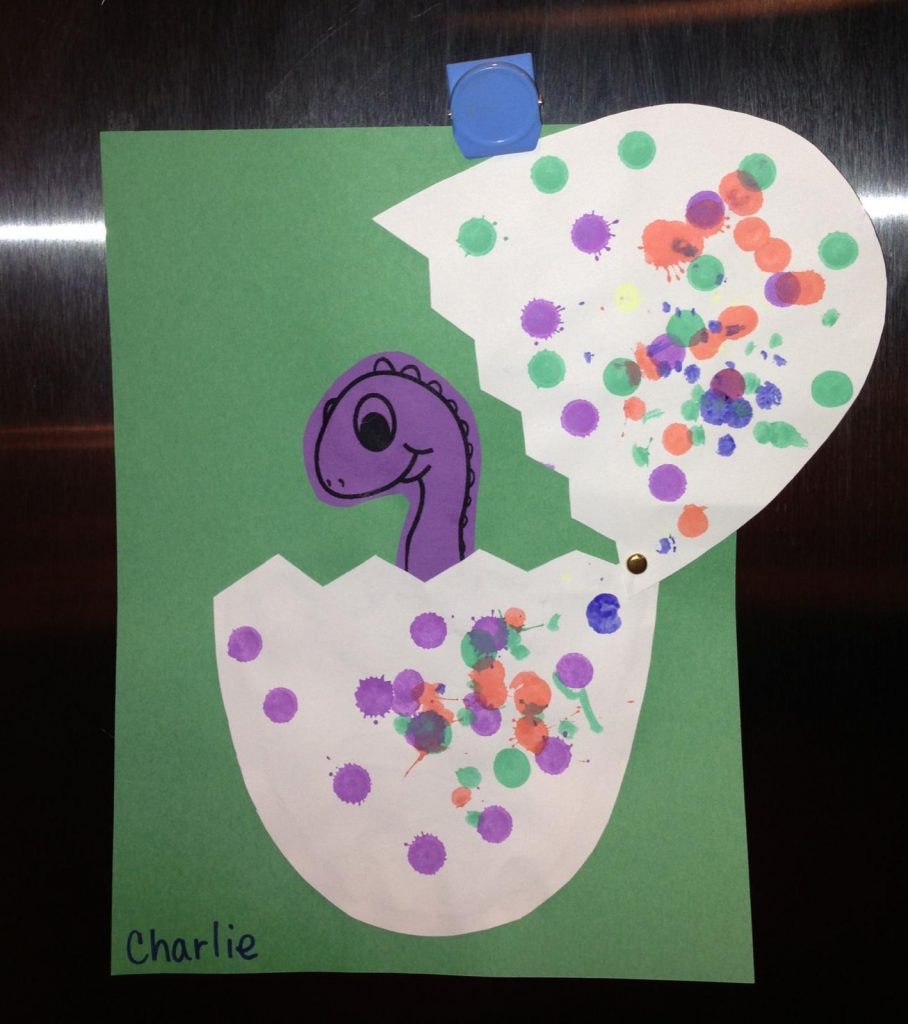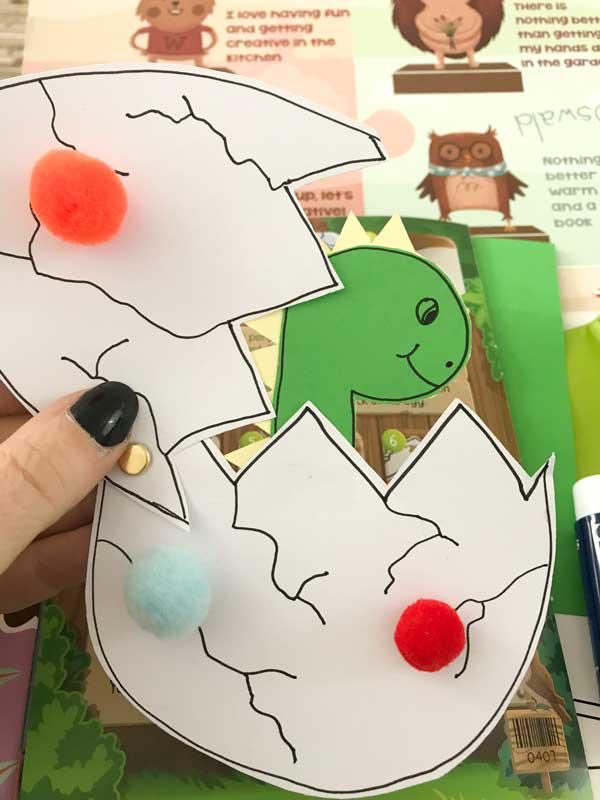Eggs!! What are these eggs? Who has left them? Are they chicken eggs? Yikes, we’ve had fossils, footprints and now eggs.
Parents – we made our eggs with:
Salt dough – 1 cup plain flour, 1/2 cup salt and 1/2 cup water, coffee grounds or a scoop of soil and small plastic dinosaurs.
Mix together the flour, salt and water until it forms a dough, add some coffee grounds if possible. I made the dough into an egg shape leaving a hole inside to pop a dinosaur into as the dinosaurs can’t go into the oven. Bake the eggs in the oven for about 2/3 hours at 100 degrees C.
Literacy (Reception)
Task 1: Look at the photos of the eggs and discuss. Your discussion could include; What do the eggs look like? Can you predict who the eggs belong too? Which animals lay eggs? Or maybe you could google real dinosaur eggs and discuss what you see.
Writing opportunity: I think the egg belongs to… because… This dinosaur egg is… I like it because…
Task 2: Read or listen to the story Tyrannosaurus Drip (this is available on Tapestry) – talk about the front cover, predict what it could be about. Talk about the differences in the dinosaurs in the story and the feelings of Tyrannosaurus drip.
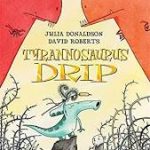
Use the link below to print out Tyrannosaurus drip cut and play pictures. Cut them out and use them to play. Or you could make your own stick puppets using lolly sticks or straws with your own dinosaur pictures. Use them to act out the story or your own story.
Task 3: Can you label the dinosaurs on this worksheet? Or you could draw your own dinosaurs and add labels of your choice. Remember to use your brilliant phonic knowledge to help write the labels.
Task 4: Dinosaurs have lots of words associated with them, together can you make a list of dinosaur words e.g. fierce, big, large, tall, roar. Again concentrate on breaking the words up using your phonics.
Task 5: Using different paper, collage materials such as feathers, bottle tops, fabric or any other bits you find around the house, can you make a dinosaur land picture? Try doing some research about what the landscape would actually look like e.g. volcanoes etc. We have included this picture to give you some inspiration….
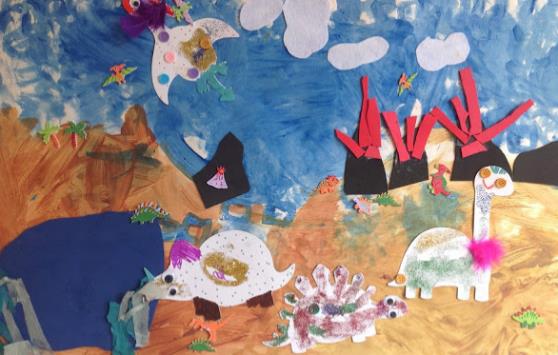
Check Tapestry for this week’s Reception phonics task.
Literacy (Nursery)
Task 1 – Look at the eggs in the photo, who could have left them? Can you draw a picture of who they might belong to and talk to a grown up about your picture.
Task 2 – Look carefully at the front cover of Tyrannosaurus Drip. What do you think the story is about? Listen carefully to the story (this is available on Tapestry). Can you predict what will happen? Were you correct? How are the dinosaurs in the story feeling? Are they angry, sad or happy?
Task 3 – Can you draw a picture of your favourite dinosaur? Can you try to write its name?
Task 4 – Can you create a dinosaur land collage and talk about what you have included in your picture? Does it have a volcano? Which dinosaurs live there? Have a look at the picture above to give you some inspiration.
Task 5 – Can you make some dinosaur stick puppets or perhaps use some dinosaur toys to act out the story of Tyrannosaurus Drip?
Check Tapestry for this week’s Nursery phonics task.
Maths (Reception)
Patterns everywhere! Good mathematicians spot and describe patterns, so this week Reception can work on this skill.
Task 1. Make a pattern. We love this song from Blazer Fresh.
Can your child join in with the actions? Can they make their own pattern using things around them? You could make a repeating pattern fruit kebab or use toys.
You could also try this sheet from Twinkl using dinosaurs.
Task 2: The Numberblocks explore pattern in this episode. Pause the episode. Can the children explain what number or colour will come next?
https://www.bbc.co.uk/iplayer/episode/b0bp2t8d/numberblocks-series-3-pattern-palace
Try using bricks or beads to make you own patterns up to 5 colours.
Bonus Activity: You could also try this repeating pattern activity.
Task 3: Let’s try using 2d shapes now. Can the children spot and continue the pattern? Can they explain why it comes next?
Try this game. It has 3 levels.
https://www.topmarks.co.uk/ordering-and-sequencing/shape-patterns
Task 4: Now let’s look at numbers. Can your child complete missing number puzzles?
Lay out numbers to 20. Remove one or two from the pattern. Can they work out which ones you have removed? Can they explain how they know? (They might talk about that it is the number before, one more or between)
Task 5: Finally let’s explore counting in 2’s. 5’s and 10’s. You could begin by grouping objects and model counting in these numbers. Show how counting in these bigger numbers makes it quicker to count to a bigger number. Practise counting in two’s, fives and tens using songs.
You could also play a game together where you say a number and then your child says the next number in the pattern, (You say 2 they say 4 etc)
Challenge: Can you find the missing numbers while counting in 2’s, 5’s or 10’s? Use the sheets below for this challenge.
Maths (Nursery)
Task 1 – Can you place the dinosaurs in order of size? Which is smallest/medium/largest? Choose your favourite dinosaur from the sheet below. First try ordering three of the same dinosaur and when confident move to five.
Task 2 – Counting objects to 10. Can you count out objects such as blocks, beads or sweets to 10 (or maybe beyond 10) Make sure to count carefully. Can you write the correct number to match the number of objects?
Bonus activity – Can you go on a number hunt? Ask your grown up to hide pieces of paper around the house, each paper will have a different number on. Can you collect the pieces of paper and then tell your grown up which numbers you have found? Maybe try with 0 – 5 first and then 0 – 10?
Topic (Reception and Nursery)
We have found some other fun related dinosaur activities you may want to try at home this week. We loved seeing some of the things you made last week, remember to keep sharing on Tapestry!
- Hunt the egg game. This is a Tyrannosaurus Drip version you may want to try.
- You could try a different way to create a dinosaur picture. Maybe try printing using sponges or potatoes.
- Could you become a dinosaur investigator? Choose your two favourite dinosaurs and compare similarities and differences between them.
- Create a brilliant hatching dinosaur egg like the ones in these pictures.
- You could make ice eggs using containers or balloons with little dinosaurs in – how can you help them to get out?
- Can you make some dinosaur shaped biscuits? Please send us a picture, we would love to see what you have made! We have included a recipe here or you could try your own.
Dinosaur biscuits: Mix 250g of softened butter and 140g of caster sugar in a large bowl with a wooden spoon. Then add 1 egg yolk and 2 tsp vanilla extract and briefly beat to combine. Sift over 300g of plain flour and stir until the mixture is well combined. You might need to get your hands in at the end to give everything a really good mix and press the dough together. Chill the mixture in the fridge for 30 minutes. Roll out and cut into dinosaur pieces. If you don’t have a dinosaur cutter you could draw dinosaurs on card and cut around those. Bake at 180 degrees for 8-12 minutes until golden brown. Cool, decorate and eat!
Feelings (Reception and Nursery)
This week we are looking at the book; You’re All My Favourites by Sam McBratney. You can hear Mrs Watson reading this book on Tapestry. After you have listened to the story; can you talk about the story with your grown up. Maybe you could think about how the baby bears were feeling at the beginning of the story? How did they feel after they talked to their Mummy or Daddy? Did talking to their grown up about their feeling help? Can you think of all the wonderful things that make you special?
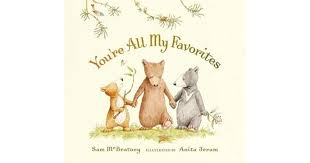
Additional Information (Reception and Nursery)
Suggested learning timetable: Please see the link below for the suggested learning timetable for Early Years. This can be found on the Archibald website along with the other suggested timetables for other key stages.
https://www.archibaldfirstschool.org.uk/eyfs-suggested-timetable/
Reading links: As this has been shared previously this may be familiar to some of you. This information now includes log in information for you access the books at home.
Please follow the information to access online reading books. These range from Pink to Turquoise level and are therefore suited mostly to Early Years and Key Stage 1. Please see the colour book band you child was reading prior to lockdown. As a general indication:
Nursery – Pink
Reception – Pink to Yellow
Year 1 – Yellow to Orange
Year 2 – Orange to Turquoise
Log in by going to https://connect.collins.co.uk/school/defaultlogin.aspx
This is a generic account to be used. This log in will be the same for everyone.
- Select Archibald First School
- Enter the first letter of the last name A
- Enter day and month of birth 1 1
- Enter year group 1
Other access can be through the following:
Oxford Owl https://www.oxfordowl.co.uk/for-home/find-a-book/library-page Oxford Owls goes up to Dark Red book bands. You can also select by phonics phase.
Reading Eggs https://readingeggs.co.uk/coronavirus-covid-19/ Reading Eggs is the multi‑award winning online reading programme for kids aged 2 to 13.
PE Weekly Challenge.
Hopefully you have received a letter via email informing you about the Active School Championships. Your challenge this week is to share an exercise on the app each day; who can submit the most challenges?
App: TopYa! Active. Unique School Access Code: 22155
We hope you enjoy the tasks and suggested activities this week. We love to see your work and pictures on Tapestry so keep sharing. We all miss you so much and think you are all AMAZING! Love from everybody in Early Years x
